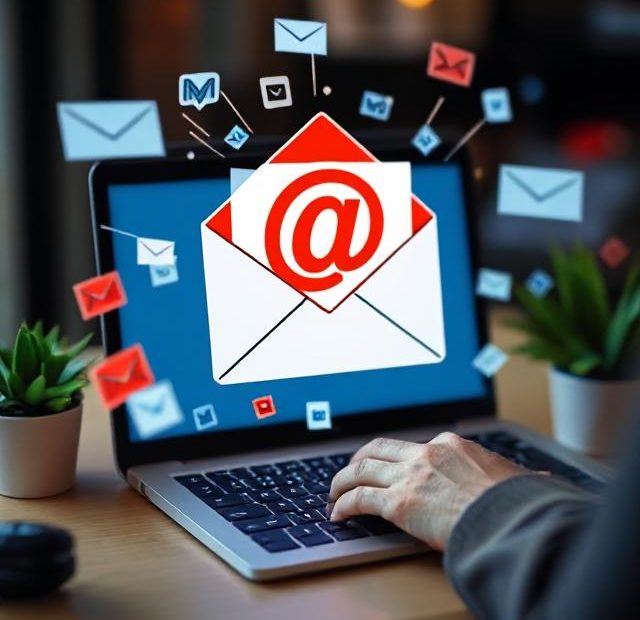If you’re sending the same email to every subscriber on your list, you’re leaving money on the table. Email list segmentation — the process of dividing your subscribers into smaller, targeted groups — is one of the most effective strategies to improve engagement, reduce unsubscribes, and increase conversions.
Whether you’re new to email marketing or looking to refine your approach, learning how to segment your email list for growth is crucial. This guide will break down what segmentation is, why it matters, and how to do it effectively.
What is Email List Segmentation?
To segment your email list means organizing your subscribers into different categories based on shared characteristics or behaviors. These segments allow you to send personalized, relevant content instead of one-size-fits-all messages.
Instead of blasting a single email to your entire list, you might send:
-
A discount email to recent buyers
-
A re-engagement campaign to inactive users
-
A product recommendation to those who clicked on a specific item
This targeted approach increases open rates, click-through rates, and conversions — all while improving the subscriber experience.
Why Segmentation Drives Growth
Here’s what makes email segmentation so powerful:
-
Higher Open Rates: Targeted emails get opened more often because they speak directly to the recipient’s interests.
-
Improved Engagement: Relevant content gets more clicks and fewer unsubscribes.
-
Increased Conversions: Emails that feel personal are more persuasive and result in higher sales.
-
Better Deliverability: Engaged subscribers are less likely to mark your emails as spam, which improves inbox placement.
According to Mailchimp, marketers who segment their email list see 14% higher open rates and 101% more clicks compared to non-segmented campaigns.
How to Segment Your Email List Effectively
Now that you understand the value, let’s explore practical ways to segment your list for better results.
1. Demographic Segmentation
This is one of the simplest and most common methods. You can divide your list by factors such as:
-
Age
-
Gender
-
Location
-
Occupation
-
Income level
Example:
Promote winter coats only to subscribers in colder climates or tailor messages based on time zone for optimized send times.
2. Behavioral Segmentation
Track how your subscribers interact with your emails, website, or products. Then create segments based on their actions.
Behavior-based segments might include:
-
Users who clicked on a specific product link
-
Subscribers who abandoned their cart
-
Customers who’ve purchased more than once
-
People who haven’t opened emails in 30+ days
Example:
Send a follow-up product tutorial to users who clicked a demo link but didn’t make a purchase.
3. Purchase History Segmentation
Grouping your subscribers by what they’ve bought allows you to cross-sell, upsell, or recommend related products.
Example Segments:
-
First-time buyers
-
Repeat customers
-
High spenders
-
Seasonal buyers
Example:
Send a “You might also like…” email with similar or complementary items based on their recent purchase.
4. Engagement Level Segmentation
Not all subscribers are equally active. Some read every email, while others haven’t clicked in months.
Segment ideas based on engagement:
-
Active: Opens and clicks regularly
-
Inactive: No engagement for 60+ days
-
New: Subscribed within the last week
Example:
Send a re-engagement campaign offering a special discount to inactive subscribers or exclusive content to highly engaged readers.
5. Signup Source Segmentation
Where and how someone subscribed tells you a lot about their interests and intent. You can use this info to customize follow-ups.
Segment by:
-
Opt-in form (blog, landing page, social ad)
-
Webinar or event attendance
-
Lead magnet downloaded
Example:
Send different welcome emails to those who joined from a blog post vs. a product page.
6. Email Preferences and Interests
Let users tell you what they want. Many email platforms allow subscribers to select topics or email frequency preferences during sign-up.
Segment by:
-
Content type (news, tutorials, product updates)
-
Frequency (daily, weekly, monthly)
-
Interests (fitness, fashion, tech, etc.)
Example:
Only send product announcements to users who opted in for new releases, keeping others focused on educational content.
Tools to Help You Segment Your List
Most email marketing platforms include built-in tools for segmentation. Some of the best options include:
-
Mailchimp: Easy tag-based and behavioral segmentation
-
ConvertKit: Automation-based segmentation by behavior or custom fields
-
ActiveCampaign: Advanced CRM-style segmentation based on customer journeys
-
MailerLite: Tag, group, and segment by engagement
These tools make it easy to segment your email list and build personalized journeys that scale.
Best Practices for Segmentation
To get the most from your segmentation strategy, follow these tips:
-
Start simple: Don’t over-segment. Begin with 2–3 meaningful groups.
-
Keep it updated: Use automation to move subscribers between segments based on their behavior.
-
Test and optimize: Track open rates, clicks, and conversions across different segments to refine your strategy.
-
Use clean data: Make sure your list is regularly scrubbed for accuracy and inactive contacts.
Final Thoughts
To grow your email marketing performance, it’s not about sending more emails — it’s about sending better emails. When you segment your email list, you deliver more relevant content, build stronger relationships, and ultimately increase sales.
To recap, you can segment by:
-
Demographics
-
Behavior
-
Purchase history
-
Engagement
-
Signup source
-
User preferences
With the right tools and strategy, segmentation becomes a powerful growth engine for your business. Start small, stay consistent, and watch your open rates, engagement, and revenue soar.
Ready to grow your email performance?
Start segmenting today and send emails that truly resonate with your audience.
Also, you can learn more about Guide to Email Marketing here.
